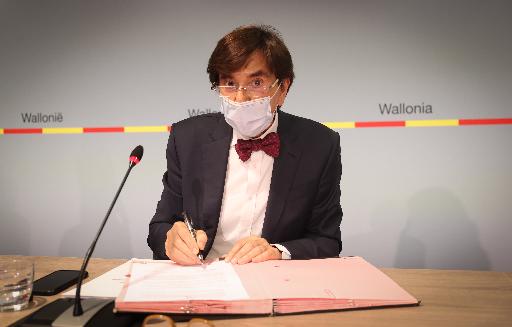Following budgetary adjustments announced on 19 May as part of the State of Wallonia speech by Minister-President Elio Di Rupo, the finances of the Wallonia Government are looking increasingly dire. In total, Wallonia is lacking €505 million in funding for its budget.
According to the Wallonia Government, the budget shortcomings are derived from increased expenditure, fuelled by inflation and automatic wage indexation of civil servants and subsidies. Add to this, the cost of the Ukraine crisis and future vaccination campaigns which will require further investment.
But the region’s budgetary woes predate the current crises. After significant economic decline stemming from the gradual pull-out of the industry from the region, the area has long been significantly poorer than Flanders.
Years of public spending has led to an “official” 2022 deficit of €207 million, which amounts to a gross deficit of more than €4 billion. Some Belgian publications speculate that the region is teetering on the edge of bankruptcy, but many economists believe this is overblown.
A sum of €19 billion was spent at the start of the year. Weighing heavily on this amount is the €1.7 billion earmarked for the region’s recovery plan, the €352 million in expenses related to the health crisis, and the €735 million in relief for areas affected by flooding in July 2021, according to statistics from Le Soir.
Ensuring debt sustainability
The question remains as to how the Wallonia Government will cover the holes in its budget. This year, the region still needs to come up with up to €700 million in savings if it intends to continue on its planned growth trajectory.
Faced with multiple and successive crises, the Wallonia Government needs to save funds. The government may choose to raid the budgets of public administrations and departments, or scale back its economic recovery plans.
Debt accounts for almost double the region’s revenue from taxes and rents. Currently, the region’s debt sits at €30 billion. If nothing is done, this could peak at €50 billion by 2030. Government-commissioned reports have described this debt as “unsustainable.”
Related News
- 45% of hospitals in Brussels and Wallonia are in the red
- Belgium: The land of opportunity for entrepreneurs?
- Poverty, jobs and green energy: Wallonia to boost recovery with €2.5 billion plan
Economists speaking to Le Soir on Wallonia's budget, have said the region needs to focus on "ensuring debt sustainability, and arbitrate between the most useful expenses, and those which are less so."
Wallonia will seek to reverse the predicted debt trajectory by a structural budgetary effort of €150 million each year for ten years.
Université Libre de Bruxelles (ULB) economist Benoît Bayenet asserts that the real challenge is not so much this structural budgetary effort of €150 million per year, but the "trade-offs within expenditure that will be necessary to meet the major challenges of an ageing population and the ecological transition."
Debt repayments extremely costly
The majority of interest that the Wallonia Government pays pertains to indirect debts, those accumulated by sub-regional authorities. These authorities have much less favourable borrowing terms and account for nearly 37.4% of Wallonia’s debt.
The government may seek to gain more favourable terms for these loans in order to reduce its annual interest payments.
Wallonia Minister-President Elio Di Rupo is determined to regain control of the situation. During his 18 May state of Wallonia speech, he repeatedly called for optimism about the situation in the region, calling for a stop to “self-flagellation” and “doomsayers.”

